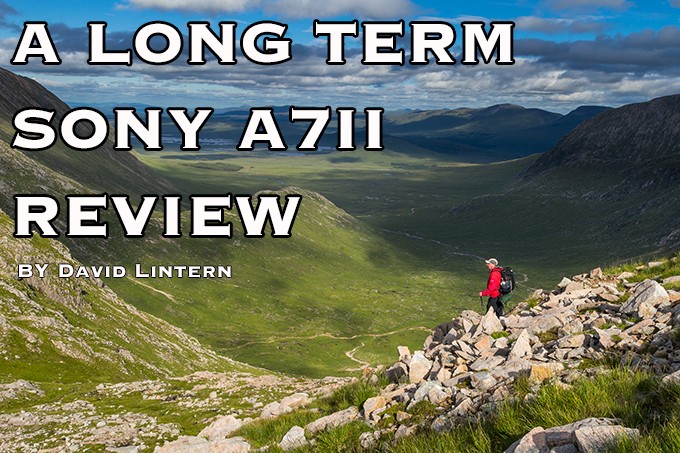
A Sony A7II long term review
By David Lintern
I work as a freelance photographer and writer in the outdoor sector in the UK, mostly contributing words and pictures to magazines in print and online. I also work as an editor on 2 outdoor magazines, so a lot of pictures cross my desk – from terrible to exceptional and a lot in between. I’m a fan of everything from Instagram to fine art and documentary, but that doesn’t mean I like everything I see. I started my own photographic journey on a Zenit 35mm camera, and have used Pentax, Box Brownies, Polaroid, and more recently Canon, Panasonic and Fuji digital cameras. I’m not beholden to a particular brand, and I’m not sponsored.
I’ve been using the Sony A7II for about a year now, not long after it came out. I wasn’t convinced about the first generation, but the second seemed to tick a few more boxes – on paper at least – so I took the plunge. I recently read an article which damned the whole idea of the Alpha system, an article which I thought was unbalanced, so felt inspired to try and give a more accurate overview of the camera in real life use. I’ll try to keep it brief and to the point.
The practicalities – size and weight
The smaller weight and size of the body is useful for someone who takes photos outdoors. I’m often in the mountains carrying food and camping equipment, so any saving is appreciated. Compared to my previous system, a Canon 5d3 running an f4 24-105mm lens, with a Sony AII with a f4 28-70mm, I get to carry around 600g less. Obviously, I also lose some reach in that equation (the 70-105mm range) which is annoying, but the reduced bulk and weight make the compromise worth it for me personally… most of the time. With a full frame sensor, I know I have plenty of crop-ability to call upon in post.
A small note about my choices here. Primes may provide the best image quality, but on the mountain a single medium zoom is often the most practical – both in terms of weight, and lens changes in inclement weather. I’m also on a budget!
Glen Etive – Sony 28-70 Kit Zoom
Lenses
In my experience, it really is a mixed bag on the lens front. That stock 28-70mm kit lens is not a stellar performer by any means. Viewed at 100% images are blurred, and colour and contrast are (to me) a little flat and uninspiring. A little more work in Lightroom is needed to restore what I saw at the time, to the file. However, I’ve still managed to produce high quality shots for mags and won some merits in competition, so whilst I’m not impressed with my pixel peeper’s hat on, it works well enough – particularly at f5.6 and f13 – and is lightweight.
I was concerned my technique had gone out of the window without a heavy body to steady my hand, and wanted to try the camera with some other lenses. With Canon lenses on the front and an adaptor, the colour and contrast were great, and the blur vanished. The L glass seemed to really compliment the Sony sensor. It’s the stock kit lens that is at issue here. However, the AF using Canon lenses with current adaptor technology is incredibly slow – so slow, it’s far faster to manual focus. This is just fact, as much as I’d prefer it to be otherwise. The Voigtländer 40mm F2.8 performs just as well if not better on the colour and sharpness front – as a manual focus lens it’s certainly not quick to use, but produces lovely, three-dimensional results with the A7II at it’s back.
The Voigtlander 40 2.8
This proved to me once again that any camera really is only as good as the glass you put in front of it. Who knew?
The FE mount has its critics and it’s true that some of the higher-grade, faster lenses that are entering the market now are as large or larger than DSLR competitors. I also have the Sony FE 16-35mm F4, which is a wonderful lens with colour and sharpness to rival the Canon equivalent, and AF as fast as I need. But on the front of the small A7II chassis it does feel like a big, heavy lens, even though it’s barely heavier than my old L16-35mm.
Maybe the critics have it right – we can’t (yet) cheat physics. What we take away from the body, we often see back in the lens. These new native lenses are also expensive for those of us who are paying… but then that’s true of a whole number of brands, not just Sony.
Since I’m focusing on…focus, C-AF on the A7II is still pretty horrible. I generally shoot landscape, walking, mountaineering, a little cycling and boating, but if I were shooting faster action sports, I’d still own or rent a DSLR. Regular AF with native lenses on the A7II is now (after firmware updates) every bit as good as my Canon 5d3 (which admittedly wasn’t the fastest). Low contrast is occasionally an issue, but it’s acceptable for my needs and any issues can be worked around with a little manual focussing. Focus peaking is obviously a huge boon here (although of course, that’s not Sony specific).
Body
Overall, the picture for me is a lot more positive here. The dynamic range on the Sony sensor is like night and day compared to my old Canon – in practise, an increase of about 3-4 stops. This is useful for landscape photography as it means I use grads a little less in the field, and as a result can react faster to changing light. This extra DR is quite a shock at first – images can feel less ‘solid’ because the shadows are more complex. Once again, in that regard it helps to have a good lens up front.
Shelter on Loch Awe – Voigtlander 40mm
–
Camp at Creag Meagaidh, Sony 16-35mm
I have a FujiX100T, which I like very much indeed, but no matter how much it’s advocates protest, an APS-C sensor is not a full frame sensor. The dynamic range of the X100T sensor is impressive, but is not comparable in any way to the A7II. Sorry… as I said, I love the Fuji, it produces wonderfully usable images very easily, and for me it’s a great machine for street, family and crag photography, but – the same as the lens issue above – physics is physics, and sensor size is sensor size. No more, no less.
Incidentally, don’t even try to continuous auto focus with the X100T – it hunts harder than Donald Trump for his conscience. Relax! We can all still take great pictures with either system, if we work with each machine, not against it.
Relating to DR in the field, the A7II p/review screen is not accurate as far as clipping is concerned, and live view is best checked with the histogram. Shots I thought blown to smithereens have been recoverable in post, which just goes to show how powerful the sensor is – even when used badly.
ISO performance is stellar, and I now rarely carry a remote timer into the mountains for night shots. I can shoot using the inbuilt timer under 30secs and get stars crisper, with less noise, than I could ever manage with the Canon.
Much has been made of poor battery performance in mirrorless cameras, but to be honest this is a non-issue. Performance in the A7II is probably a half to a third of a Canon DSLR battery, and has improved with firmware updates. At any rate, batteries are small and lightweight. I just carry a few more.
More of an annoyance is the poor performance of the internal battery in ‘extreme’ cold. Several times, I’ve been forced to reformat the entire camera with date and time whilst hanging from the side of a snowy mountain. This can lead to temporary memory card/file confusion. Images have always been recoverable in back at base, however – Lightroom finds them after you replug the camera. Sony need to look at this in a firmware update – it’s not good enough at the moment for professional use.
Personally, a lot of how well I use a camera depends on the ergonomics, and I very much appreciate the level of customisation available on the A7II. I always shoot fully manual, so having the ability to access aperture, shutter speed and ISO, as well as back button focus, feels like the best of both the analog machines I grew up with, and the convenience and speed of modern digital.
The schoolhouse ridge, Sony 28-70mm
–
Silver birch on Loch Awe – Voigtlander 40mm
The one camera to rule them all?
It’s the dream, but like most things… it’s a dream for a reason. We are losing some of the weight and size advantage with fast lenses up front, but it doesn’t stop this camera being incredibly powerful… and it’s still a little smaller and lighter than a trad DSLR. My older DSLR felt like a chunky, clunky toy after I’d used the A7II for a month. I sold my Canon body and, much more reluctantly, gave up the glass a few months later. I still kind of resent that, because they make excellent lenses that are field-practical. But anyway, don’t believe the hype, either way. Look more closely at whose writing good and bad things about different brands, and more often than not you’ll find they have a vested interest. I’ve tried to be objective here, because as an editor and sometime gear reviewer for magazines, that’s my job. The Sony Alpha system isn’t perfect, but at the moment the A7II is a great camera for my needs.

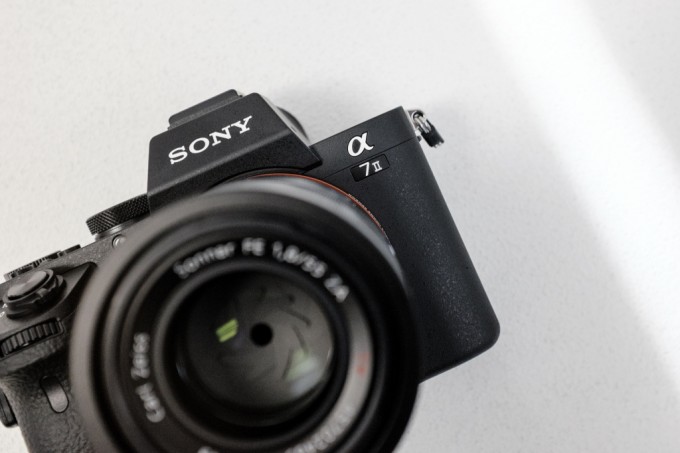
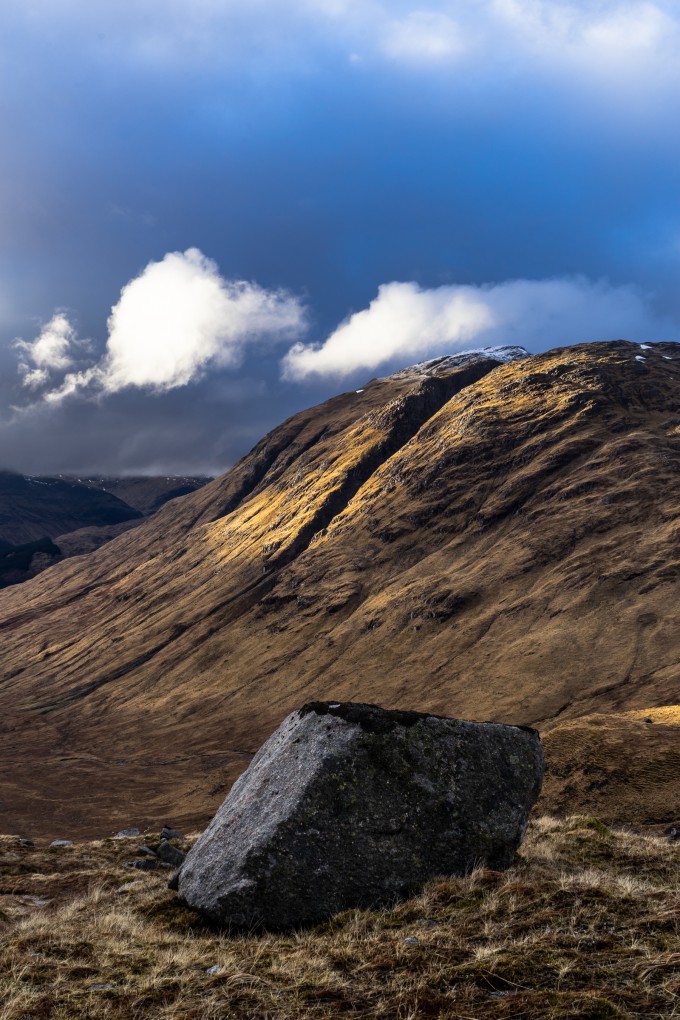
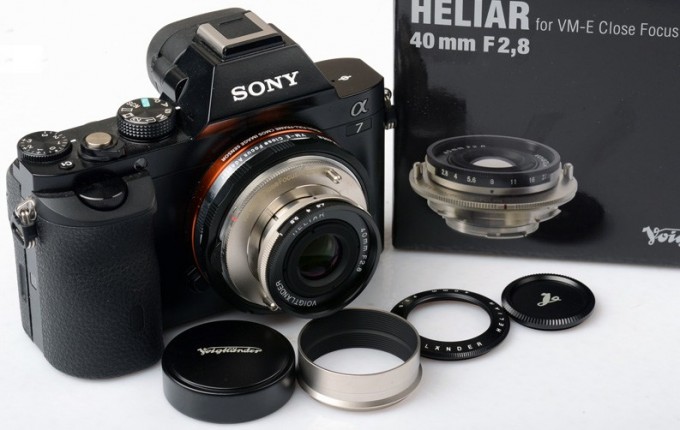
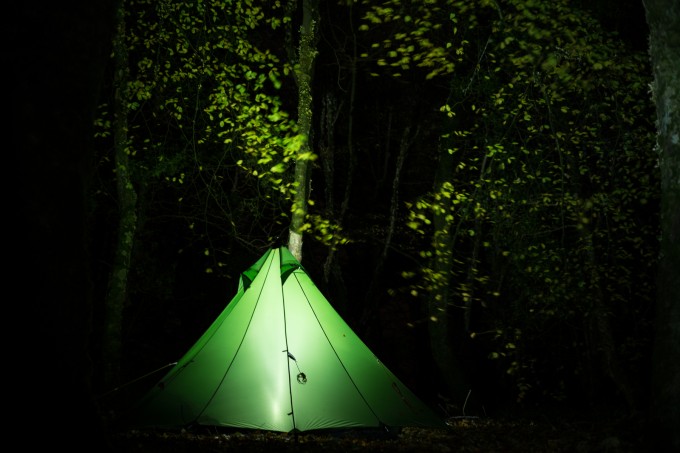
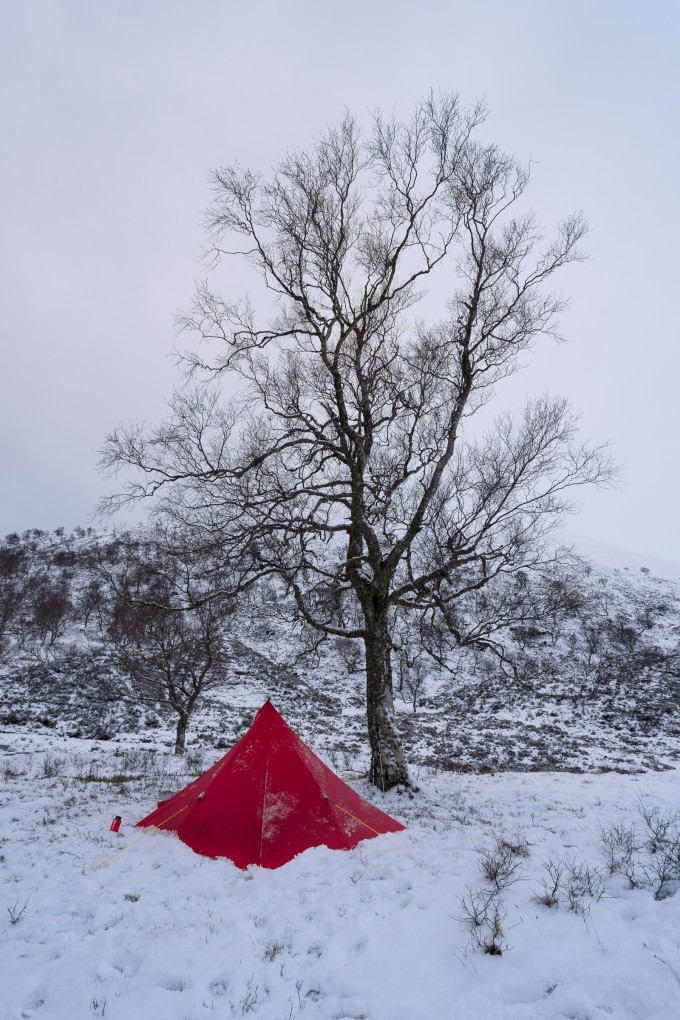
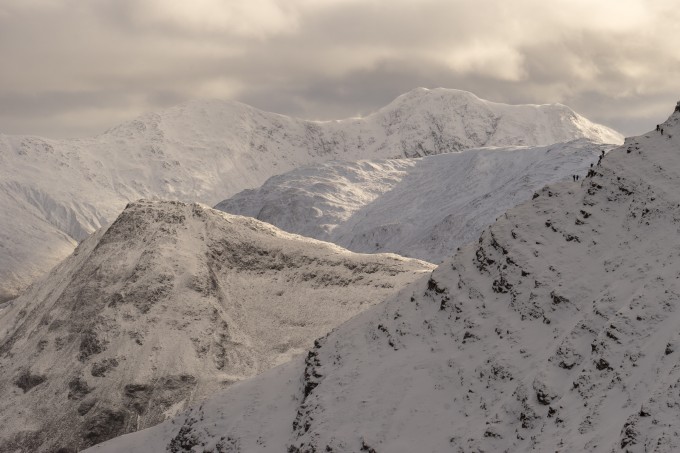
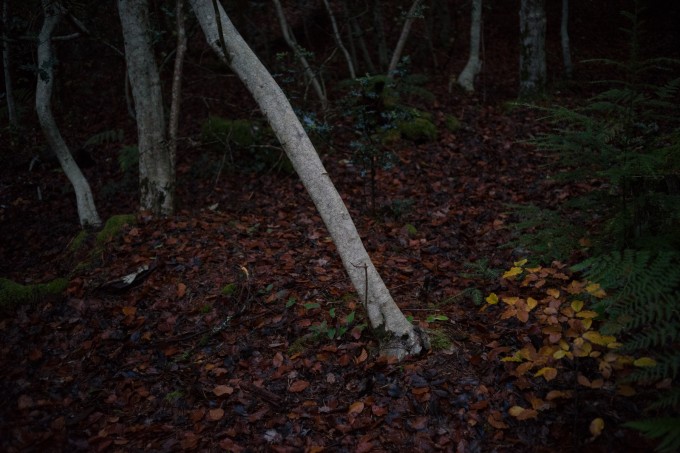


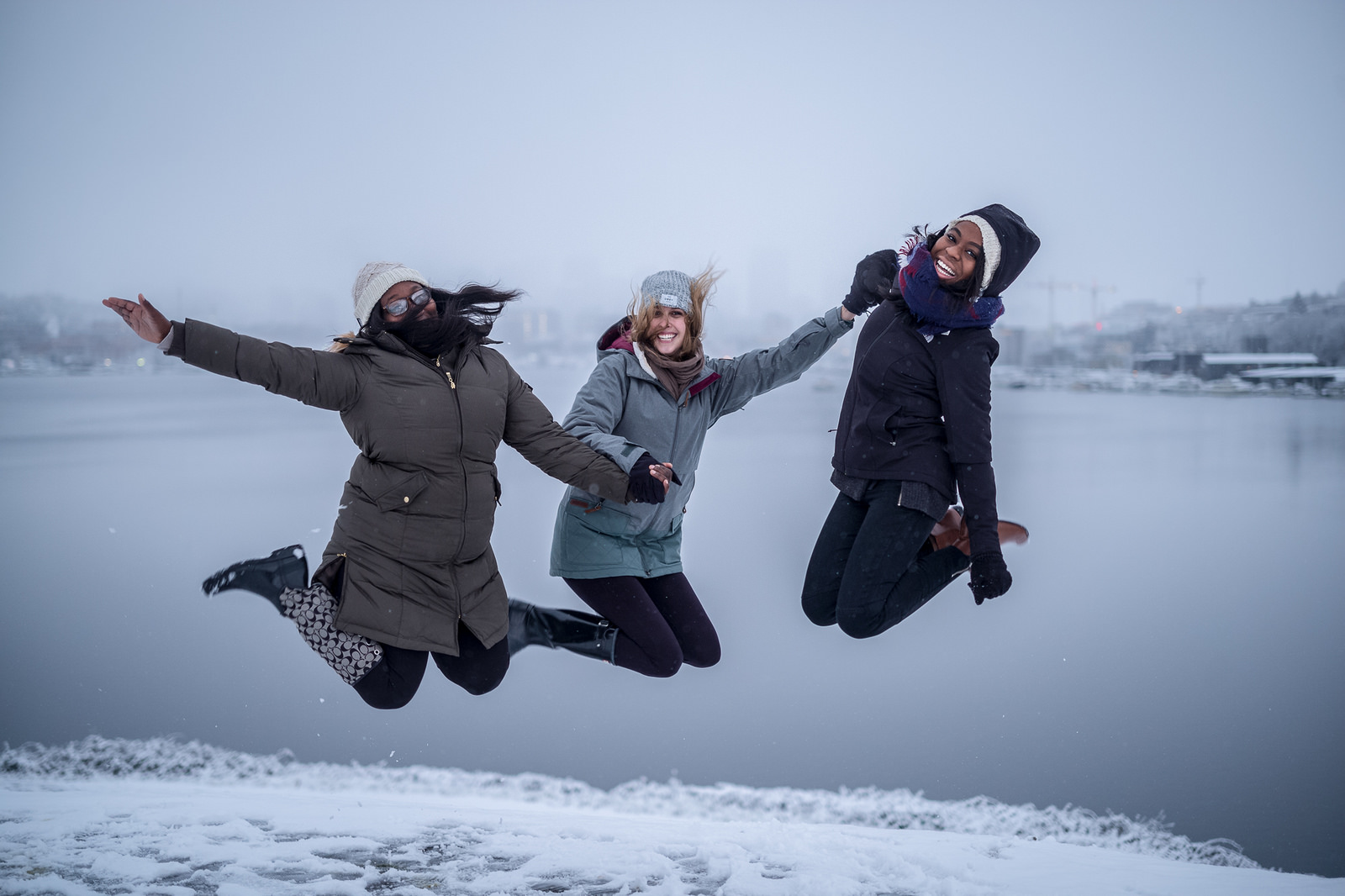
Every test that measured the Fuji DR vs the Sony A7 II has proven this guys claim is in accurate at best. In relation to noise, the Sony might actually have less usable DR than say, the Fuji X-T20 and this has actually been documented already.
The A7 II is impressive, just using the body and getting s taste of how quickly it does everything. The body without a doubt is great, and the only issue is the poor balance of the body / lenses.
Of course, as somebody that has used every brand under the sun, my advice to the author would be… Don’t take drive by jabs at other competitors if you weren’t actually comparing the two setups entirely throughout the review.
Some go by real world testing which to me, bests any lan test any day. What we see in a lab is not always what we see when out there using the cameras in the real world. David wrote this article and I agree with everything he says, and I have shot Sony, Fuji, Olympus, and others extensively. I get the best DR from my A7RII over any camera I have shot with including Fuji. That is not in a lab test but in real world. The reality is though that DR is not an issue these days, so it does not matter if one technically offers a slight, undetectable amount of DR over the other. Neither system will give you blown highlights if you know what you are doing. So a non issue today. I can say that the Sony offers amazing DR, more than I need.
If balance is an issue, then consider adding an adaptor and use Leica M or M style lenses from 3rd party manufactures such as Zeiss (and others) as they are typically 50% of the bulk of the “normal” lenses?
There is always a Third Way!
Firstly, thank you for your time and effort on the review.
The poor battery life is a real issue in cold. The Leica is even worse, the Nikon is amazing at -30 degrees. I have about half a dozen batteries, and why wouldn’t you?
Sony don’t give a stuff when your camera goes wrong and the camera will be away for weeks on end, this I know. They will not deal with you directly, but through a third party, for which you must pay.
Sony sell it cheap by piling it high and they pretty much have cornered the market on sensors.
Having just one body is asking for trouble.
You’ll need a shutter release cable if you want to go beyond 30 seconds on any given exposure, and why wouldn’t you?
Never mix Leica DNG files with the Sony / Nikon files on the same card – you can have some horrendous issues with reading to card and also on more than one occasion I have had to use a third-party recovery software to even view the Leica files if you mix Nikon / Sony / Leica RAW files on the same card, but not necessarily altogether.
With some third party lenses the Sony does not do so well, it cannot cope wide open with the Leica 35mm f1.4, and utterly hates the 28 mm f2.8. but adores the 90 mm f2 though.
The battery life is considerably extended if you manual focus only.
The camera is an absolute godsend in your rucksack because of it’s low weight. This then requires a smaller tripod too!
I’ve had some issues in the studio, when the aperture is set at f8 and you want to recompose your focus and have to take it down to f2 and use the ambient light to do so. There might be a work-around for this but….
The menu on the Sony is appalling.
The sensor does not attract dust or crap at all, which is completely the opposite with the Leica M240!
As much as I decry the Sony I do think it’s fabulous piece of equipment and used in the right hands is the way forward with digital photography although I do use my Nikon D800 for landscapes still. I do have an adapter for the Nikon lenses to fit the Sony, but after three years of owning an adaptor, I still have not employed it / them!
The truth is that for the Sony and I, the mainstay of the work is done on the 35mm, 50 mm and occasionally 90 mm Leica lenses, and for that alone I give it a 5 star rating, no hesitation.
This past winter, I photographed progress photos for a local utility using my M240 with the slip on EVF in 10 degree weather for 6 hours, alongside my DSMKIII. Because of condensation concerns, I elected to stay outside for the entire time and the M240 had over 50% battery left after the shoot. Didn’t need to use my 2 spares. Don’t know how any of my camera’s would hold up in -30, but for me, I’d be in a hotel hot tub at those temps!
The body is NOT weatherproof because of the daft bottom plate – yes, I know it’s a throwback to the old M cameras, but water runs down the camera and into the base plate. Stooopid design. My M240 has had to be returned to Germany three, yes, three times since 2013, lugs, shutter and sensor failures.
The one camera system which is a genuine Trojan is / have been the Nikons.
Still love the Leica and the Sony, miss my 500C ‘bad and the Mamiya 7 produces wondrous results.
In short, I can make any camera work for me around all its / their shortcomings, but I do love the Leica glass.
Simple, if you don’t like the Sony Alpha range equipment don’t buy it, but do check out Jason Lanier photography, you will be amazed…..
Really enjoyed this review. I own a Sony A7II and I would echo much of this experience. The kit lens leaves much to be desired (I’ve repurposed it to my A6000) and the lack of good native zoom lenses, especially any compact zooms, has forced me to build a collection of primes. So I usually do shoot with primes on my A7II and that produces stellar results. It’s not always convenient to zoom with your feet, but I feel that’s the best use of this camera for me. i did not want to just duplicate my DSLR experience. I enjoy the smaller form factor and mostly look for that in lenses as well.
I don’t have that exact model, but overall I think you’re pretty much spot-on in your reasoning and conclusion. It can’t do absolutely everything, but it does more things at least as good as a DSLR while offering more flexibility. DSLRs have a wide array of lenses choices – but wait until you see the choice for the A7!
I really liked some of the photos (mainly those in the published section of your website) so thanks for sharing!
I don’t know anything about ‘support’ as I have never had a camera break on me yet, no matter what the brand. Some of the cameras I use are so cheap that they would not be worth repairing – I would just buy another one.
This reminds me of the kinds of sophistic complaints that some film shooters would have against digital: what if the battery runs out? What if you lose the memory card? What if the memory card becomes corrupt? All good points, but never deal-breakers.
However, professionals do carry at least two bodies with them while out in the field, right? Well, if you don’t, you should – not just for the client’s sake but for yours, too.
The Sonys are so small you can carry two with just as much ease as you can carry one DSLR – and of course one body is not enough. Of course the support issue is real, and Sony is rightly criticised for it, but it’s not a deal-breaker for the professional – IMHO.
That is because you are not a professional.
Okay. I see what you mean. You’re a plain-spoken guy, and I appreciate that. So I need some advice from you, if you don’t mind. Should I give my clients a refund?
If so, I’d be honoured if you would be the first person to donate to my Kickstarter campaign. The problem is that after I give my clients their refund, I’ll have to take my photos back. That’s going to be really, really interesting. And awkward.
I second Tom’s assertion. The mindset of a seasoned “non-professional” by nature, is most likely very different from a “professional”, that pretty much lives and dies by no only his/her aesthetic expertise, but the reliability of the equipment used to achieve the clients’ demands. Regardless of the complexity of my shoot, I have 3 bodies with me, 2 Canon & 1, M240. I have adapters that will allow me to use with limitations, any EOS lens on my M240. I have redundancy of everything except my car, but at least I have a working spare tire 🙂 That said, if I were to start shooting with Sony without the other brands to fall back on, I’d need to have a minimum of 2 Sony bodies, & probably 3, just to feel secure.
Any camera you make money from, and where the customer’s needs are fulfilled is a professional tool. I worked for many big companies over 30+ years of shooting professionally (last was John Deere) and no art director or company representative ever questioned the brand of gear I was using, and I have used most of them. That said, the job has to get done. Neither NPS nor CPS’s services would have been of any help deep in the forests where I was working (days away from any possibility of swapping failed gear); so for me the pro approach has to be self containment. This means a minimum of two bodies that experience has shown you are dependable and all the lenses/flash units/accessories you think you will need with you to do the work. Also sufficient power and CF/SD cards: you can be away from civilisation longer than you think, and plans change on the fly.
For example, the last time I worked with John Deere and an art director from Israel, we did dawn shots, travelled 200+ miles per day to various setups, and shot dusk to sunset, for a week in the bush.
I have not used any of the Sony A7 series, yet. Certainly Tom’s stories (and one more I commented on in the B&H comment section on the A7s) would give me pause if I had to use them professionally. That said, many pros I interact with over at Fred Miranda’s site and Get DPI use the A7 series professionally and do not have problems, yet. And I agree that any working pro needs a direct conduit to the repair/service people.
Really nice photos and a fair article. In my eyes you have 24 Million pixel camera? Could be interesting to see a fast photo series with fast moving object. Greetings Marc
You just spend a lot of money changing from one system to another and I do not read a lot of pro’s to underline the usefulness!! I am also a hiker and camping out. The Canon 24-70 EF II on a 5 D M II or 5 DS is used in over 80% of the shots and I also carry a tripod and 70-200… …and I am 58 years old!
Hi David,
I do agree, but just in part. OK for the image quality. But the weight loss is not that much with the sony. My Canon 6D with the 50 1.4 isn’t that big. And if you want a compact zoom you have the excellent 24-70 f/4, used it’s about 500 euro.
I use Canon 6D for weddings, with a good technique in exposure you can (in part) compensate the DR “problem” (in my experience 6D hides so much detail in the almost blown up part of the image).
6D is light, has very good AF (central point), it’s silent and operates very fast. And, the most important thing, in the evening with dim light with the bride going all around and dancing you have no lag in the finder.
And you have so much battery life.
However I tried the first generation of the A7. Maybe operation is better with A7II, but the weight/size thing is even worse.
The Fuji’s are crap for me. I tried for some time Fuji X-T1 with the 18-55 2.8-4 in dim light and its AF lags behind even my old crappy 5D MKII. With the 27mm 2.8 the XT-1 was crappy in a similar way. And guys… in dim light the lag in the finder is embarrassing. The owner of the Fuji tried my Panasonic GX1 with the panny 20mm and said to me “mmm… I think this is newer than mine”, I just laughed!
I tried also the X100S: AF is real crap. It struggles in backlight, in dim light… it focuses only when it’s easy!
In the mirrorless world I prefer micro 4/3 format. I already have a good full frame system and I want a light and alternative mirrorless format. Micro 4/3 isn’t worse than full frame. It just have a different look. In my opinion micro 4/3 looks more “cruel”, less dreamy, more “real”. I find it a nice companion even for landscape photography: the 4/3 look just make you think differently 🙂
However I enjoyed the review 🙂
Best wishes from Italy,
Davide.
I’ve shot an entire wedding with just an x100, the slowest of the all and just last week I shot a wedding with one xt1 and two lenses(16mm 1.4 and 56mm 1.2 APD). To me anyone that complains about ANY gear 5 years or newer not being capable is just looking for excuses for his/her lack creativity.
Iran, that is so well said. As far as the Fuji system goes I’d love to try it.
“..it hunts harder than Donald Trump for his conscience”. Or Hillary Clinton to be honest.
Let’s keep politics out of it, D Lintern.
I think it was just a attempt at humor, rather than political commentary.
…and you’re contradicting yourself by adding your own counter remark 😉
Thanks for that article, David; very fair, from my perspective. Can you add a link to the article that damned the Alpha system; I would like to read that myself. Regards, KL
Thanks Kit, the 2 posts that are relevant are:
http://petapixel.com/2016/04/04/sonys-full-frame-pro-mirrorless-fatal-mistake/
and the response is
http://petapixel.com/2016/04/05/defense-sonys-pro-mirrorless-cameras/
be aware as per my final paragraph that both of these are partisan, but at least the second post declares their bias 😉
David: thank for those links. Will read later today. And I love your work, too. Regards, KL
…. until it packs up.
Then you will regret the move away from the Pro arms of Canon or Nikon as there is a complete absence of any professional backup at Sony, BTW, the shutter curtain is not covered under the Sony warranty.
Have you had it drenched yet? That caused me three days of no shooting a few months ago, the addition of a third party adaptor makes it leek like a sieve!
Using it in manual focus mode of course saves battery power too.
Enjoyed the review, thanks.
Hello. I enjoyed your review, but I must second Tom’s response. Coincidentally, this is my post from another article viewed earlier today…
“Was strongly considering A7RII to replace my aging DSIII & 7D. Going with the 5DSr & 7DII for one huge reason beyond all of the “image quality” talk; back end support. There is “zero support” with Sony. 2 weeks ago, I cracked the screen on my DSIII. In a busy period so I drove it to CPS support in Itasca, Il. and the NEXT DAY, they emailed me saying it was ready for pickup. $185 later and my camera functions like new. IF I would have needed to send it to NJ or CA., that would have only added 4 days to the turnaround time. When you’re making $$ with your gear, lousy support is a deal breaker far more critical than most tech specs. CPS rocks!
I am based in he UK and whilst there are companies such as Fixation in London who fix Nikon and Canon independently, they don’t handle Sony.
It is a constant worry, if that’s the correct word, though I have a M240 as well so I am not lost it does fail again on me.
Even though I could see the shutter curtain was hanging loose inside the a7R, they insisted I could not deal with Sony direct, so it went to a company who fixes Sony products, TV’s etc. They charged me almost £40 to tell me the shutter curtain was broken and they’d sent it on to Sony to be fixed, who then gave me a second bill.
The service you will receive from Sony is not professional should anything go wrong with your camera, that’s all I am saying – plus the shutter curtain is not under any warranty, regardless of age.
This then is possibly the dividing line between professional and non-professional camera equipment, the back up and servicing you can access in any given emergency?
Thanks both, I’ve not had cause to deal with Sony in this way, but it’s definitely a future consideration given your experiences.
This to me makes the camera an amateur piece of kit, the fact that Sony do not hold the shutter curtain under the standard 1yr warranty tells me it’s been tested and found wanting.
Ergo: it is not a professional tool.
That and the fact that there is no dedicated Pro service arm of the company; for goodness sake, I was given a list of companies in my local area with whom I had to select one to have the camera fixed and even then, they couldn’t carry out the repair tells me it’s no a professional camera for working professionals – unfortunately.
So, treat it with kid cloves, don’t assume it will work flawlessly and when it fails, have a backup with you since it will be AWOL for 4-6 weeks, not ideal when, as in my case, I was 2 months into a 3 month trip in the US.